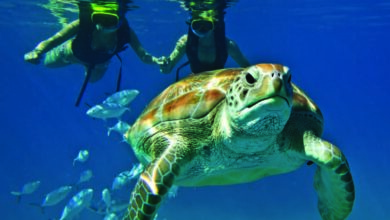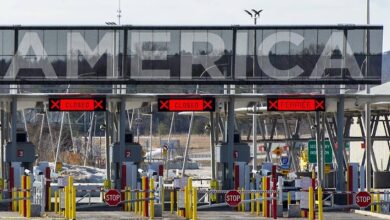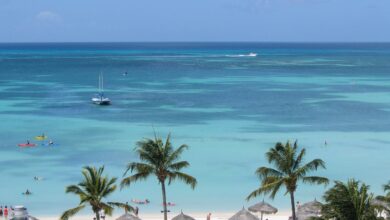
Alaska Vows to Strengthen Cruise Line Partnership
Alaska vows to strengthen partnership with cruise lines, promising a mutually beneficial future for both the state and the cruise industry. This initiative aims to address challenges and capitalize on opportunities within the cruise tourism sector, impacting local economies and communities while upholding environmental sustainability. The historical relationship between Alaska and cruise lines will be examined, along with the goals, strategies, and potential challenges of this evolving partnership.
This move signifies a proactive approach to managing cruise tourism in Alaska, acknowledging its economic importance while considering environmental factors and community well-being. The proposed strategies for improvement, from enhancing passenger experiences to addressing environmental concerns, will be explored in detail. Crucially, the potential impacts on Alaskan communities, including economic opportunities and potential downsides, will be assessed.
Background and Context
Alaska’s relationship with cruise lines is a complex interplay of economic benefits, environmental concerns, and evolving tourism strategies. This partnership, while crucial to Alaska’s economy, has also faced challenges and adaptations over the years. Understanding this dynamic is key to appreciating the current state of the relationship and the future outlook.Cruise tourism has become a significant component of Alaska’s economy, providing employment opportunities and revenue for communities along the coast.
The economic impact extends beyond direct employment, impacting local businesses, supporting infrastructure development, and stimulating the overall economic climate.
Historical Overview of the Relationship
Alaska’s reliance on cruise tourism has a long history, evolving from a nascent industry to a major economic driver. Early cruise itineraries focused on a limited number of destinations, and the passenger volume was relatively modest. As the industry expanded, so did the importance of cruise tourism to the Alaskan economy.
Economic Significance of Cruise Tourism
Cruise tourism plays a vital role in Alaska’s economy. It provides jobs for thousands of people, from dockworkers and tour guides to restaurant staff and hotel workers. The economic ripple effect is substantial, boosting spending in local businesses and contributing to the overall tax base. This industry is a key contributor to the state’s economic vitality. Revenue generated from cruise passengers supports essential services and infrastructure projects throughout the state.
Recent Trends in Cruise Ship Traffic and Passenger Numbers
Recent years have witnessed fluctuations in cruise ship traffic and passenger numbers in Alaska. Increased demand has led to a surge in capacity, while regulatory changes and environmental concerns have introduced challenges. The fluctuating nature of passenger numbers and ship traffic reflect the complex factors influencing the cruise industry in Alaska. This dynamic nature necessitates careful monitoring and adaptation by both cruise lines and Alaskan authorities.
Alaska’s pledge to bolster its cruise line partnerships is certainly noteworthy. However, with the Alaska cruise tax proposal back on the docket here , it’s clear there’s still some financial friction to navigate. Ultimately, these moves highlight the complex relationship between tourism, taxation, and the cruise industry’s future in Alaska. Stronger partnerships could help ease the tension.
Significant Events and Policy Changes
Significant events and policy changes have significantly shaped the relationship between Alaska and cruise lines. The implementation of new environmental regulations and the response to environmental incidents, like oil spills, have influenced the industry’s approach. These events have driven a stronger emphasis on environmental responsibility and sustainability within the cruise industry, impacting future operations. Safety and environmental regulations are constantly evolving, shaping how cruise lines operate in Alaskan waters.
Timeline of Key Milestones
- 1970s-1980s: Initial growth of cruise tourism, with a limited number of cruise ships and itineraries.
- 1990s-2000s: Exponential growth in the cruise industry, increasing passenger numbers and the economic impact on Alaskan communities. The importance of cruise tourism became a major talking point in Alaskan politics.
- 2010s: Increased scrutiny of the environmental impact of cruise ships. The emergence of stricter regulations and the implementation of sustainable practices. Significant policy changes occurred during this decade, driving the industry toward a more environmentally conscious approach.
- 2020s: The COVID-19 pandemic significantly impacted cruise ship traffic, leading to cancellations and restrictions. The industry faced major disruption, forcing adaptation and a renewed focus on health and safety protocols. The need to adapt to pandemic-related issues led to an important pivot in cruise operations.
Goals and Objectives of the Partnership
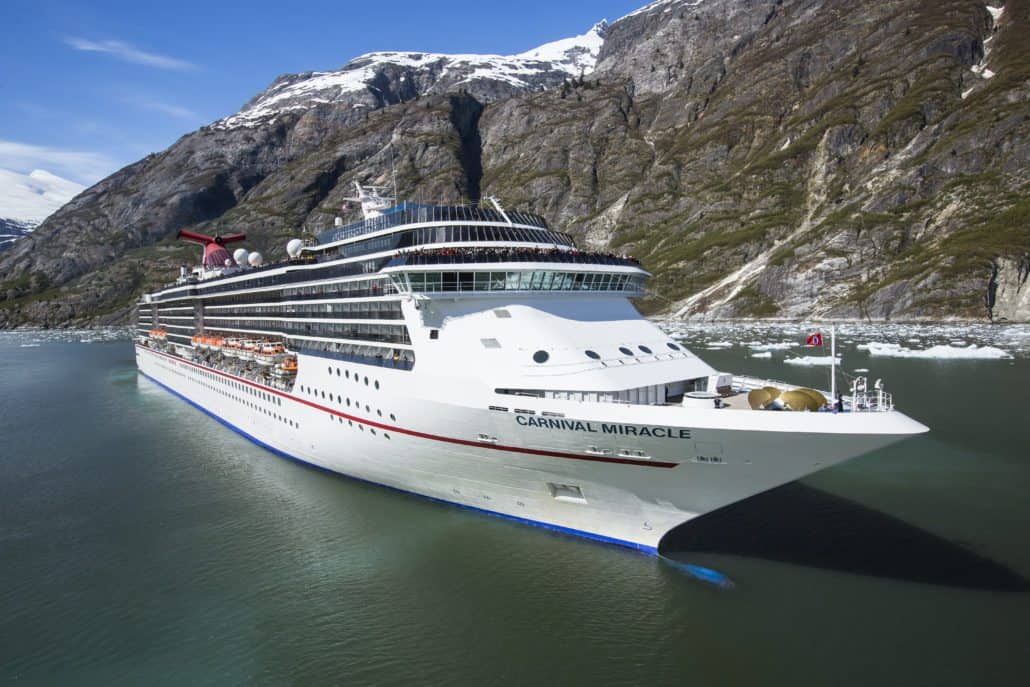
Alaska’s strategic decision to bolster its cruise line partnerships signifies a commitment to fostering a mutually beneficial relationship. This initiative aims to capitalize on the economic advantages offered by cruise tourism while mitigating potential negative impacts. Crucially, it seeks to create a sustainable model for the future of Alaska’s tourism industry, balancing the needs of visitors with the preservation of the state’s unique environment and culture.This strengthened partnership will likely yield substantial benefits for both Alaska and the cruise lines involved.
Alaska stands to gain through increased revenue streams and improved infrastructure, while cruise lines can anticipate enhanced operational efficiency and potentially greater passenger satisfaction. The ultimate goal is to create a harmonious coexistence between the cruise industry and Alaskan communities.
Alaska’s vow to bolster its cruise line partnerships is certainly interesting, especially given the recent focus on improving travel infrastructure. It’s clear that boosting tourism is a priority, as seen in Jamaica’s confidence in a winter arrivals surge, with the airlift a priority as Jamaica confident of winter arrivals boost. Ultimately, though, Alaska’s strategy for attracting cruise ships and passengers will likely hinge on a well-rounded approach to service and experience.
Stated Goals of the Partnership
Alaska’s stated goals in strengthening its partnership with cruise lines encompass a variety of objectives. The primary focus is on ensuring a positive experience for both cruise passengers and local residents. This includes efforts to enhance passenger engagement with Alaskan culture and natural wonders, minimizing environmental impact, and maximizing economic benefits for the state.
Potential Benefits for Alaska
A strengthened partnership offers several potential benefits for Alaska. Increased cruise ship traffic can stimulate local economies through higher spending by passengers on accommodations, tours, and local goods. Cruise lines can contribute to infrastructure development, providing funding for improvements in ports and related facilities. This investment in infrastructure could also attract other forms of tourism, fostering a diversified economic base.
- Improved infrastructure: Increased cruise ship traffic often necessitates improvements in port facilities, potentially including expansion, upgrades, and enhanced safety measures. This, in turn, can attract other forms of tourism, fostering a more diversified economic base for the state.
- Enhanced local businesses: Increased tourist traffic can lead to greater demand for local goods and services, boosting revenue for restaurants, shops, and tour operators. For example, if more cruise ships visit a particular town, there will be more demand for local souvenirs, food, and tours.
- Job creation: A surge in tourism often translates into increased employment opportunities in various sectors, such as hospitality, transportation, and tourism services. A higher volume of cruise passengers may necessitate hiring more staff in hotels and restaurants, creating new jobs in Alaska.
Potential Benefits for Cruise Lines
Cruise lines stand to gain numerous advantages from a strengthened partnership with Alaska. Improved port facilities and streamlined operations can enhance efficiency, reduce costs, and improve the passenger experience. A positive relationship with Alaskan authorities can lead to a more predictable and stable operating environment. Cruise lines can also benefit from a better understanding of local regulations and procedures.
- Streamlined operations: Clearer and more streamlined procedures at Alaskan ports can reduce delays and improve the overall efficiency of cruise operations. This leads to reduced operational costs and improved passenger satisfaction.
- Enhanced passenger experience: A stronger partnership can facilitate the development of engaging and enriching itineraries for cruise passengers. More accessible and comprehensive tours and activities within Alaska can enhance the quality of their experience.
- Reduced operational costs: Improved port facilities, potentially resulting in faster loading/unloading times and reduced waiting periods, can contribute to reduced operational costs for cruise lines. Improved logistical support can lead to greater efficiency in the cruise industry.
Addressing Existing Challenges
Alaska’s cruise industry faces challenges, including the environmental impact of large vessels and potential strain on local infrastructure. Strengthened partnerships can help mitigate these challenges by promoting environmentally responsible practices and investing in sustainable infrastructure. Cruise lines can also be encouraged to adopt more sustainable practices and contribute to conservation efforts.
Positive Outcomes for the Local Economy
The enhanced partnership can have significant positive impacts on the Alaskan economy. Increased cruise ship traffic can generate substantial revenue for local businesses, contributing to job creation and economic growth. The presence of cruise ships can also create opportunities for diversification, attracting other forms of tourism and supporting local entrepreneurs. For example, small businesses can leverage this increased tourism to create new products and services.
Projected Impacts on Alaskan Communities
The strengthened partnership is projected to have a positive impact on Alaskan communities, but also requires careful consideration of potential negative impacts. Increased tourism can lead to greater economic opportunities, but also challenges related to infrastructure, community services, and environmental sustainability. The goal is to create a balance that benefits both the cruise industry and Alaskan communities. This will involve a focus on sustainable practices, community engagement, and careful planning.
Strategies for Strengthening the Partnership
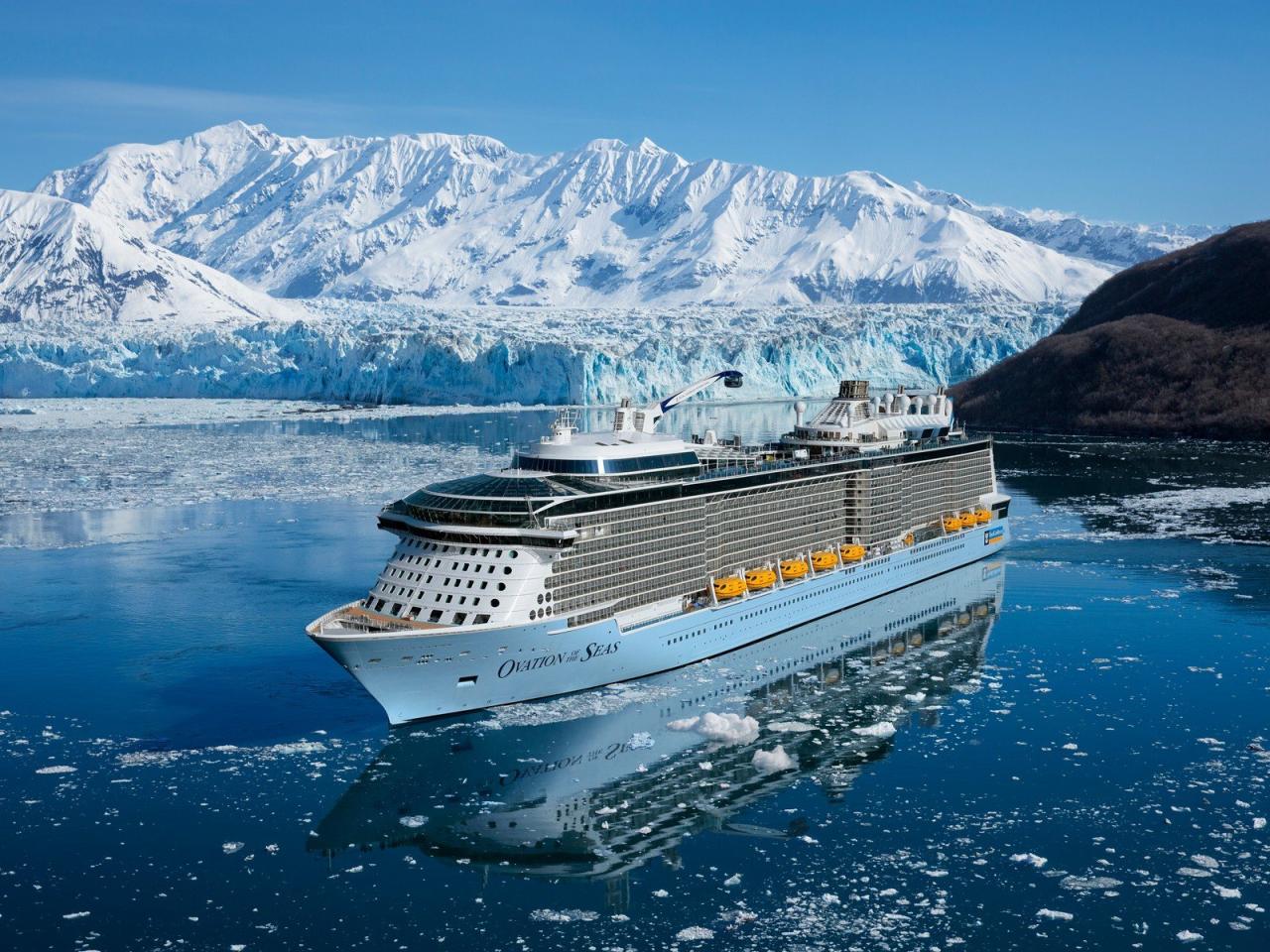
Alaska’s commitment to strengthening its partnership with cruise lines extends beyond simply welcoming visitors. It’s about creating a mutually beneficial relationship that fosters economic growth, enhances the passenger experience, and protects the delicate Alaskan environment. This necessitates a multifaceted approach encompassing various strategies.Alaska likely recognizes the crucial role cruise lines play in its tourism economy. Cruise ships bring significant revenue, but also pose challenges related to environmental impact and visitor management.
Therefore, the strategies Alaska employs must balance these factors.
Strategies for Enhancing the Cruise Passenger Experience
Alaska can improve the cruise experience by focusing on activities and attractions that extend beyond the typical port calls. Cruise lines often have pre-booked shore excursions, but offering a wider range of options, including locally-led tours, would allow passengers to immerse themselves in Alaskan culture and nature. This could involve partnerships with local businesses to offer unique experiences like kayaking, hiking, or wildlife viewing tours.
By diversifying the experience, Alaska can cater to a broader range of passenger interests. This personalization will enhance the perceived value of the cruise and encourage return visits.
Strategies for Addressing Environmental Concerns
Environmental sustainability is paramount for Alaska’s long-term relationship with cruise lines. Alaska can work with cruise lines to implement stricter emission standards, encourage the use of cleaner fuels, and support the development of sustainable practices within their operations. These strategies might include promoting alternative transportation options for passengers during their time ashore, like electric buses or bicycles. Also, collaborative efforts to monitor and mitigate the environmental impact of cruise ship activities are essential.
This could involve research and monitoring programs to understand and address potential damage to sensitive ecosystems.
Strategies for Collaborative Projects and Initiatives
Alaska and cruise lines can engage in joint projects that benefit both parties. For example, a partnership could involve developing a shared platform for real-time information dissemination on weather conditions, wildlife sightings, or potential hazards. This will provide passengers with up-to-date information and enable better planning of excursions. Additionally, joint initiatives could focus on educating passengers about the importance of environmental responsibility while in Alaska.
This includes reducing waste and minimizing the impact on sensitive ecosystems. Cruise lines could sponsor environmental education programs in schools, fostering awareness and appreciation of Alaskan nature.
Improving Communication and Collaboration Between Government and Cruise Lines
Establishing clear communication channels and protocols is crucial for fostering effective collaboration. This can include regular meetings and workshops to address concerns and share best practices. Creating a dedicated communication platform, perhaps a dedicated email address or online forum, will allow for rapid and efficient exchange of information between Alaska’s tourism agencies and cruise line representatives. Open dialogue will ensure that concerns are promptly addressed, and solutions are collaboratively developed, ultimately enhancing the relationship.
For example, a streamlined permitting process, readily accessible information, and well-defined reporting mechanisms can significantly improve this aspect of the partnership.
Alaska’s commitment to bolstering cruise line partnerships is intriguing. It’s a smart move, especially considering how crucial advertising plays in attracting tourists. Companies like the early online travel agencies (OTAs) advertising and the pioneer otas demonstrated the power of targeted marketing to draw in travelers. This focus on attracting tourists through strong marketing, like the innovative strategies employed by the early OTAs, is key to Alaska’s continued success in the cruise industry.
Potential Challenges and Opportunities
Alaska’s burgeoning cruise industry faces a complex interplay of opportunities and challenges. Strengthening partnerships with cruise lines is crucial for maximizing benefits while mitigating potential downsides. Understanding these factors is key to ensuring a sustainable and profitable future for both Alaska and the cruise industry.The future of cruise tourism in Alaska hinges on careful consideration of potential obstacles and opportunities.
This includes anticipating the impact of environmental changes, adapting to evolving cruise line preferences, and fostering resilient relationships with key stakeholders.
Potential Obstacles to Strengthening Partnerships
Navigating the complexities of international regulations, diverse cruise line needs, and fluctuating market demands can be challenging. Different cruise lines prioritize various aspects of their operations, leading to potential discrepancies in expectations and objectives. These divergences could create friction in partnership development and implementation. Moreover, fluctuating market conditions, including economic downturns and shifts in consumer preferences, can negatively affect cruise tourism.
Alaska’s vow to strengthen its cruise line partnerships is exciting news. It’s great to see the state supporting the industry, but also exciting to see new options emerging like Adventuresmith’s new Hawaii cruise offering, which promises unique experiences. This new offering from adventuresmith announces hawaii cruise offering could potentially boost tourism, creating a ripple effect that will benefit Alaska’s cruise industry as well.
Ultimately, Alaska’s commitment to cruise lines seems smart and forward-thinking.
- Varying Operational Priorities: Cruise lines may prioritize different aspects of their operations, leading to conflicts over resource allocation, environmental standards, and service delivery. For instance, some lines might emphasize maximizing passenger capacity, while others focus on sustainability initiatives, potentially leading to disagreements on operational strategies.
- Regulatory Hurdles: Alaska faces evolving environmental regulations and safety standards, requiring continuous adaptation for cruise line operations. Meeting these evolving regulations can be costly and require significant investment in infrastructure and training.
- Economic Volatility: Fluctuations in global economic conditions can influence cruise tourism demand, making it difficult for Alaska to predict and adapt to market shifts. Economic downturns or global crises can dramatically impact the number of passengers, potentially jeopardizing the viability of planned projects.
Potential Opportunities for Growth and Innovation
Alaska can leverage its unique natural beauty and diverse experiences to create a competitive advantage for cruise lines. This includes developing tailored itineraries, promoting cultural immersion, and emphasizing sustainability. The creation of innovative partnerships can drive innovation in the cruise industry.
- Sustainable Initiatives: Collaborating with cruise lines on sustainable practices can position Alaska as a leader in eco-tourism. Implementing environmentally friendly technologies and practices in cruise operations can enhance the destination’s image and attract environmentally conscious tourists.
- Diversified Itineraries: Expanding itineraries beyond the traditional coastal routes can appeal to a broader range of passengers and create unique experiences. For instance, offering itineraries focused on wildlife viewing, cultural immersion, or outdoor adventures can attract niche markets.
- Technological Advancements: Utilizing technology to enhance cruise experiences, such as digital platforms for booking and navigation, can improve efficiency and passenger satisfaction. This can also include integrating technology to facilitate communication between cruise lines and local communities.
Impact of Climate Change on Cruise Tourism, Alaska vows to strengthen partnership with cruise lines
Climate change poses significant threats to Alaska’s cruise tourism industry, including rising sea levels, changing weather patterns, and increased risk of natural disasters. This poses challenges for cruise line operations and the local communities that depend on the industry.
- Sea Level Rise: Rising sea levels can impact coastal infrastructure, making it more difficult and potentially dangerous for cruise ships to access ports and anchorages. This can also result in increased maintenance costs for ports and docking facilities.
- Extreme Weather Events: Alaska faces increasing frequency and intensity of extreme weather events like storms and flooding. These events can disrupt cruise itineraries, damage cruise ships and port facilities, and impact the safety of passengers and crew.
- Wildlife Impacts: Changes in climate can alter the distribution and behavior of wildlife, impacting the experiences and safety of cruise passengers. This necessitates careful consideration of wildlife protection and potential disruptions to tourism due to changes in wildlife behavior.
Examples of Successful Partnerships
Numerous successful partnerships exist between other destinations and cruise lines, demonstrating the viability of collaborative efforts. These collaborations showcase how strategic partnerships can lead to enhanced visitor experiences and mutual benefits.
- The Bahamas: The Bahamas has a strong track record of collaborating with cruise lines, focusing on providing unique experiences for passengers. These initiatives include the development of specific itineraries that showcase the cultural and natural heritage of the region.
- The Caribbean: Many Caribbean destinations have fostered robust partnerships with cruise lines, capitalizing on their unique natural assets and cultural heritage to attract a wide range of passengers. These partnerships typically involve joint marketing efforts and the development of complementary tour packages.
Possible Solutions to Mitigate Challenges
Addressing potential obstacles requires proactive strategies to maintain the viability of Alaska’s cruise tourism industry. This includes developing flexible operating procedures, strengthening regulatory frameworks, and fostering resilient community partnerships.
- Flexible Operating Procedures: Cruise lines should be encouraged to develop flexible operational plans that can adapt to changing weather conditions, potential disruptions, and unforeseen circumstances. This includes contingency plans for navigating severe weather and accommodating shifts in visitor patterns.
- Strengthening Regulatory Frameworks: Alaska should collaborate with cruise lines to refine and strengthen existing regulations, ensuring that they are effective and sustainable. This includes continuous monitoring and adaptation of regulations to address environmental and safety concerns.
- Community Partnerships: Fostering strong community partnerships is vital to address the needs and concerns of local communities. These partnerships can help build trust, understanding, and a shared vision for the future of cruise tourism in Alaska.
Impact on Alaskan Communities
A strengthened partnership between Alaska and cruise lines holds significant potential for Alaskan communities, promising economic benefits but also posing potential challenges. Understanding these impacts is crucial for responsible development and equitable distribution of the benefits. This section will delve into the positive and negative consequences on local communities, focusing on jobs, the environment, and cultural heritage.This strengthened partnership has the potential to dramatically reshape the economic landscape of Alaskan communities, from small towns to larger cities.
The potential effects on jobs, the environment, and cultural heritage are significant and multifaceted. Careful consideration and planning are necessary to maximize the positive impacts and mitigate the negative ones.
Positive Impacts on Local Jobs and Employment
The cruise industry directly and indirectly creates employment opportunities in Alaskan communities. Jobs range from dockworkers and tour guides to restaurant staff and hospitality workers. This influx of employment can significantly boost local economies, particularly in areas heavily reliant on tourism. Alaska’s thriving fishing industry can also experience a positive ripple effect through increased demand and potential collaborations.
Potential Negative Impacts on Local Jobs and Employment
While the cruise industry creates jobs, it may also displace local businesses and create a dependence on the industry. Seasonal nature of cruise tourism can lead to fluctuations in employment, impacting local workers and potentially creating a cycle of job insecurity. Competition for resources like housing and services could also arise.
Impact on the Environment and Cultural Heritage
Cruise ship activities can have a significant impact on the environment, including noise pollution, waste disposal, and potential damage to sensitive ecosystems. It’s vital to have stringent environmental regulations and robust waste management systems in place. Cultural heritage sites and traditions can also be affected by increased tourism, requiring careful planning and community engagement to minimize disruptions. Careful consideration must be given to maintaining the delicate balance between tourism and the preservation of natural and cultural resources.
Examples of Successful Community Engagement Programs
Several Alaskan communities have implemented successful community engagement programs to maximize the benefits of tourism while minimizing negative impacts. These programs often involve local input in planning, promoting sustainable practices, and creating opportunities for community members to participate in the tourism sector. One such example is the development of culturally relevant tours that provide insight into local traditions and histories, thereby increasing understanding and appreciation.
Alaska’s vow to bolster its cruise line partnerships is interesting, considering the current travel landscape. With destinations like the Caribbean facing challenges, like the recent redirection of babymooners due to Zika outbreaks, agents redirect babymooners as zika spreads , it’s likely Alaska is proactively seeking to maintain and enhance its position as a premier cruise destination. This strategic move to strengthen partnerships suggests a proactive approach to adapting to changing travel trends.
Comparison of Economic Impacts on Different Alaskan Communities
| Community Type | Potential Positive Impacts | Potential Negative Impacts ||—|—|—|| Rural, small towns | Increased employment in tourism sector; potentially revitalizing local businesses. | Potential for strain on local resources; influx of tourists could negatively affect local culture. || Coastal cities | Increased employment in tourism, hospitality, and related services; potentially attracting investment. | Potential for increased competition in the housing market; infrastructure strain; higher cost of living.
|| Interior towns | Limited direct impact, but potentially benefit from increased regional economic activity. | Less direct impact of tourism, but may experience increased costs for goods and services. |These are illustrative examples, and the specific impacts will vary greatly depending on the individual community and the nature of the cruise ship partnership. Comprehensive studies are needed to accurately assess the unique economic impacts on each Alaskan community.
Further, local input and community-based decision-making are crucial to ensure the partnership benefits all stakeholders.
Environmental Considerations
Alaska’s stunning landscapes and rich wildlife are a major draw for cruise tourism, but the environmental impact of cruise ships needs careful consideration. The sheer volume of ships, coupled with their operational demands, can strain the delicate ecosystems of Alaska’s waters and coastal areas. Understanding and mitigating these impacts is crucial for the long-term sustainability of both the tourism industry and the environment.
Environmental Impact of Cruise Ship Traffic
Cruise ships generate significant amounts of pollution, including noise, air emissions, and waste discharge. Noise pollution disrupts marine life communication and navigation patterns. Air emissions contribute to greenhouse gas buildup, impacting the global climate and local air quality. Wastewater discharge, often containing untreated or inadequately treated sewage and greywater, can contaminate coastal waters and harm marine life.
Additionally, ballast water discharge can introduce invasive species into sensitive ecosystems, altering the balance of local biodiversity. The sheer number of ships navigating specific areas can also lead to increased risk of collisions with marine mammals and other wildlife.
Initiatives for Reducing the Environmental Footprint of Cruise Lines
Several initiatives are underway to lessen the environmental impact of cruise ships. Cruise lines are implementing various measures, such as improving engine efficiency, adopting cleaner fuels, and investing in advanced wastewater treatment systems. These efforts aim to reduce emissions and discharge of pollutants into the surrounding environment. The adoption of cleaner fuels, such as LNG, is a significant step towards reducing greenhouse gas emissions.
Potential Solutions for Waste Management and Pollution Control
Effective waste management is critical for minimizing pollution. Cruise lines can implement stricter waste segregation and recycling programs on board. This involves comprehensive waste management plans to ensure that all waste generated is properly sorted, recycled, or disposed of responsibly. Furthermore, enhanced wastewater treatment systems, capable of removing contaminants from greywater and sewage, can significantly reduce water pollution.
Developing and implementing standardized waste disposal protocols across all cruise lines is a crucial step towards responsible environmental practices.
Examples of Best Practices in Sustainable Cruise Tourism
Several cruise lines have adopted best practices for sustainable tourism, demonstrating that environmental responsibility and profitability can coexist. Some lines are partnering with local communities to create educational programs for passengers, emphasizing the importance of respecting the natural environment. Others are employing alternative power sources, such as hybrid engines or battery technology, to reduce their reliance on fossil fuels.
Examples of successful sustainable cruise tourism practices can serve as a model for other cruise operators, fostering a collaborative approach to environmental protection.
Environmental Regulations and Standards
| Regulation/Standard | Description | Impact |
|---|---|---|
| International Maritime Organization (IMO) regulations | Set international standards for ship emissions, ballast water management, and waste disposal. | Provides a framework for reducing pollution from ships globally. |
| US Coast Guard regulations | Establish specific requirements for cruise ships operating in US waters, including waste management and pollution control. | Ensures compliance with environmental standards within US jurisdiction. |
| Alaska regulations | Address specific environmental concerns related to Alaska’s unique ecosystems, such as marine mammal protection and habitat preservation. | Focuses on the specific needs of Alaskan ecosystems. |
Environmental regulations and standards are crucial for holding cruise lines accountable for their environmental impact. Compliance with these standards ensures a responsible approach to cruise operations and helps protect the delicate ecosystems of Alaska.
Future Outlook: Alaska Vows To Strengthen Partnership With Cruise Lines
Alaska’s cruise tourism partnership is poised for continued growth, but the future is not without its complexities. Adapting to evolving consumer preferences, technological advancements, and environmental concerns will be crucial for maintaining a thriving industry. Predicting the precise trajectory is challenging, but by understanding potential trends and proactively adapting strategies, Alaska can navigate the shifting landscape and secure a bright future for its cruise sector.
Future Trends in the Cruise Industry
The cruise industry is constantly evolving, driven by changing consumer expectations and technological innovations. A growing focus on sustainability and immersive experiences is shaping the industry’s future. Cruise lines are increasingly incorporating eco-friendly practices, from reducing emissions to supporting local conservation efforts. Furthermore, the rise of personalized experiences and curated itineraries, catering to specific interests and demographics, is becoming a key differentiator.
The use of technology, such as virtual reality and augmented reality, is expected to enhance onboard experiences and create more engaging excursions.
Potential Impacts on Alaska
These industry trends will undoubtedly impact Alaska’s cruise tourism. The demand for sustainable and immersive experiences will likely increase, prompting cruise lines to partner with Alaskan communities for authentic cultural exchanges and eco-conscious excursions. The rise of technology will lead to more interactive and personalized cruise itineraries, potentially boosting visitor engagement and economic activity in Alaska. However, the increasing demand for sustainability may also present challenges related to infrastructure and operational adjustments.
Possible Scenarios for the Evolution of the Partnership
The future of the partnership will likely depend on a number of factors, including evolving market demands, environmental regulations, and the cruise lines’ commitment to sustainable practices. A positive scenario might see a stronger focus on responsible tourism, with cruise lines actively engaging with Alaskan communities to create mutually beneficial partnerships. Conversely, a challenging scenario could involve increased pressure on Alaska’s natural resources and infrastructure, potentially leading to strained relations between cruise lines and local stakeholders.
A more moderate scenario might see a balanced approach, where cruise lines adapt to changing market demands while maintaining a strong partnership with Alaska’s communities.
Adapting to Changing Market Conditions
Alaska can adapt to changing market conditions by proactively embracing sustainable practices, strengthening partnerships with local businesses, and fostering a culture of responsible tourism. Investing in sustainable infrastructure and promoting eco-conscious tourism initiatives will be crucial. Furthermore, diversifying the Alaskan tourism experience beyond the traditional cruise model, including exploring other tourism segments like adventure travel and outdoor recreation, will enhance the visitor experience and create a more robust economy.
The development of specialized cruise itineraries catering to specific interests, such as wildlife viewing or cultural immersion, will attract a broader range of tourists.
Improving the Quality of the Visitor Experience
Enhancing the visitor experience requires a multi-faceted approach. Alaska can focus on creating more immersive and culturally enriching experiences, such as engaging with local artists and artisans, or offering unique opportunities for cultural immersion. Partnerships with local businesses and communities will allow tourists to connect with Alaska’s vibrant culture and traditions. Emphasis on education about Alaskan history, wildlife, and the environment will enhance visitors’ understanding and appreciation of the region.
Moreover, streamlining logistical processes and providing well-marked and accessible visitor pathways will enhance the overall experience.
Visual Representation of Potential Future Scenarios
Imagine a scenario where cruise lines are deeply integrated into Alaska’s tourism ecosystem. A series of overlapping circles, representing cruise ships, local businesses, and Alaskan communities, illustrates a harmonious relationship, where each element supports the other’s success. This image signifies the mutually beneficial partnership and the interconnectedness of the cruise tourism industry. Another image could depict a single, isolated cruise ship, with a few scattered, unconnected circles representing local businesses, illustrating a less integrated and potentially less sustainable partnership.
This visual representation can effectively highlight the importance of a strong, collaborative partnership between cruise lines and Alaskan communities.
Wrap-Up
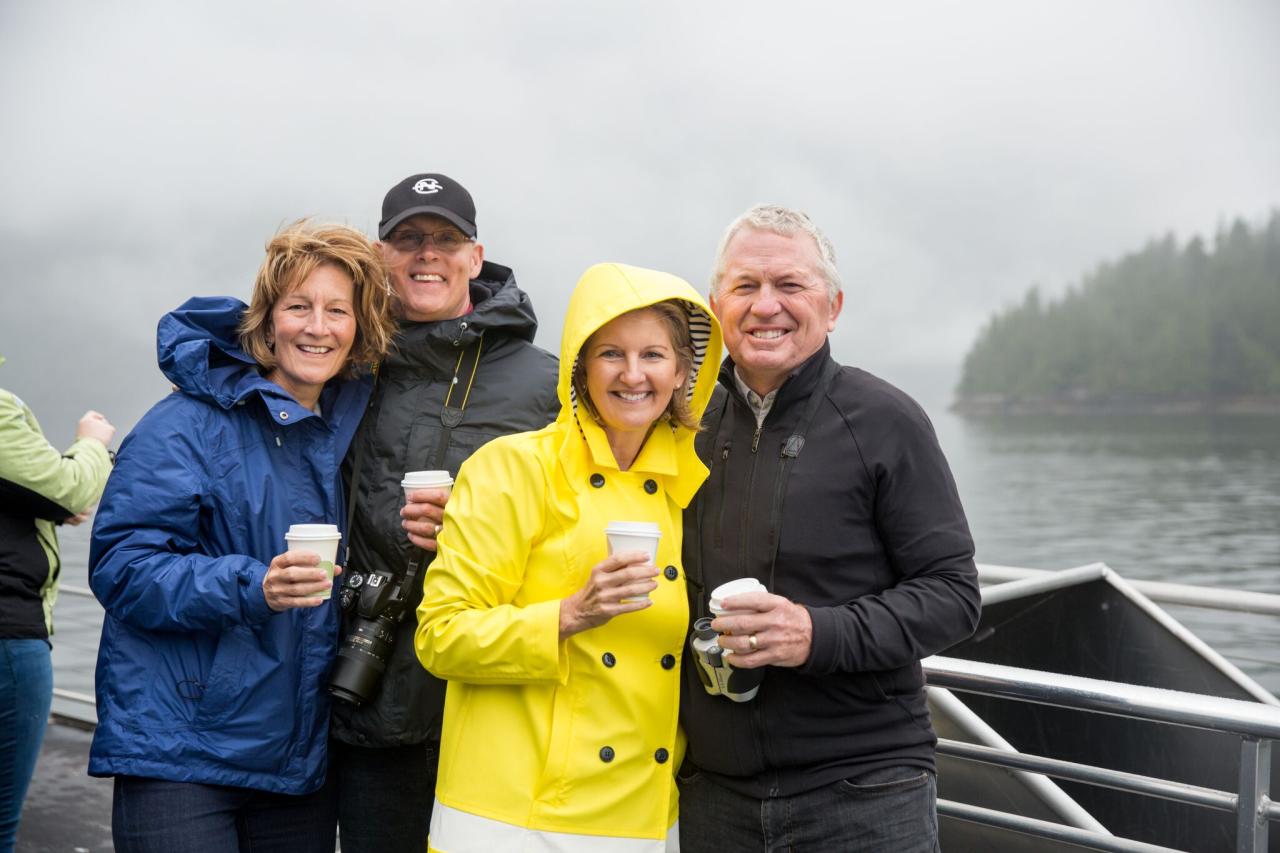
In conclusion, Alaska’s commitment to strengthening its partnership with cruise lines presents a complex interplay of economic, environmental, and social factors. The potential for growth and innovation is substantial, but careful consideration of challenges and opportunities is paramount. This initiative underscores Alaska’s desire to balance the economic benefits of cruise tourism with environmental protection and community well-being, ensuring a sustainable future for all stakeholders.
Question & Answer Hub
What are some specific examples of collaborative projects between Alaska and cruise lines?
Unfortunately, specific examples of collaborative projects aren’t included in the provided Artikel. More information on concrete initiatives would be needed to provide examples.
How will this partnership impact the Alaskan fishing industry?
The Artikel doesn’t detail the potential impacts on the Alaskan fishing industry. This would require further analysis and consideration of potential competition and resource allocation.
What are the projected costs associated with strengthening this partnership?
The Artikel does not provide details on projected costs. Information on financial implications is absent from the provided overview.
What are the potential negative impacts on local Alaskan communities?
Potential negative impacts, such as increased strain on infrastructure, displacement of residents, or cultural disruptions, aren’t detailed in the provided Artikel. Further research would be required to understand potential downsides.



